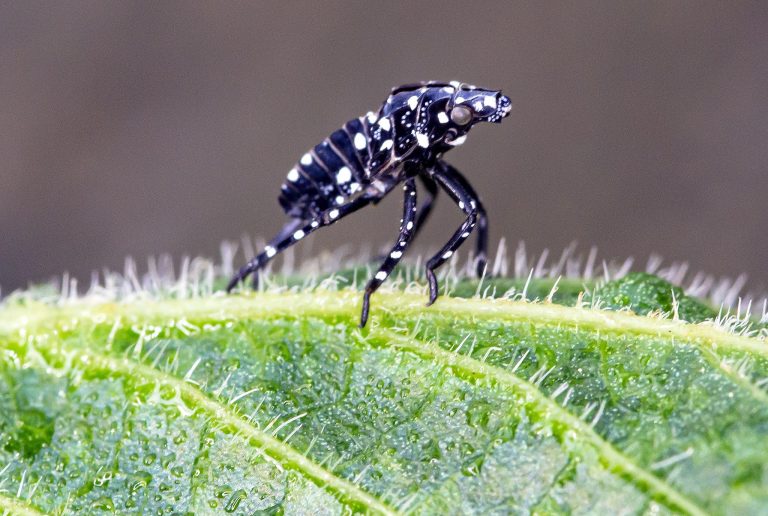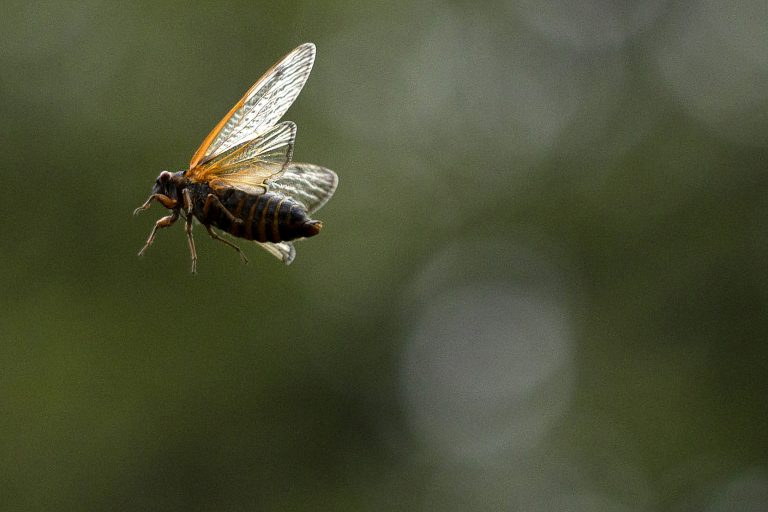First discovered in Pennsylvania in 2014, spotted lanternflies—an invasive species called Lycorma delicatula originating from parts of China—have spread to and infested most of the Garden State, with 13 of New Jersey’s 21 counties quarantined for the insect as of September last year.
Like all members of the “hopper” family (family Cicadellidae), this insect is aerodynamically designed to make great leaps, and feeds on sap from plants during both the nymph and adult stages of its life cycle. This results not only in the loss of nutrients to the plant, but also increased susceptibility to disease.
Is New Jersey agriculture in danger?
As spotted lanternflies suck the sap from plants, they excrete and leave “honeydew” on their host. This fecal matter is high in carbohydrates, and attracts other insects to the area of the wound where they penetrated, making conditions ripe for the spread of fungal disease.
Since many of the plants that spotted lanternflies feed on are fruit trees and grapes, New Jersey growers have cause for concern. Entomologist Matthew Aardema of Montclair State University paints a grim picture, saying “With few predators and no parasites in New Jersey to keep them in check, each year’s population will be bigger than the last;” yet the effect so far seems minimal on our local farmers.
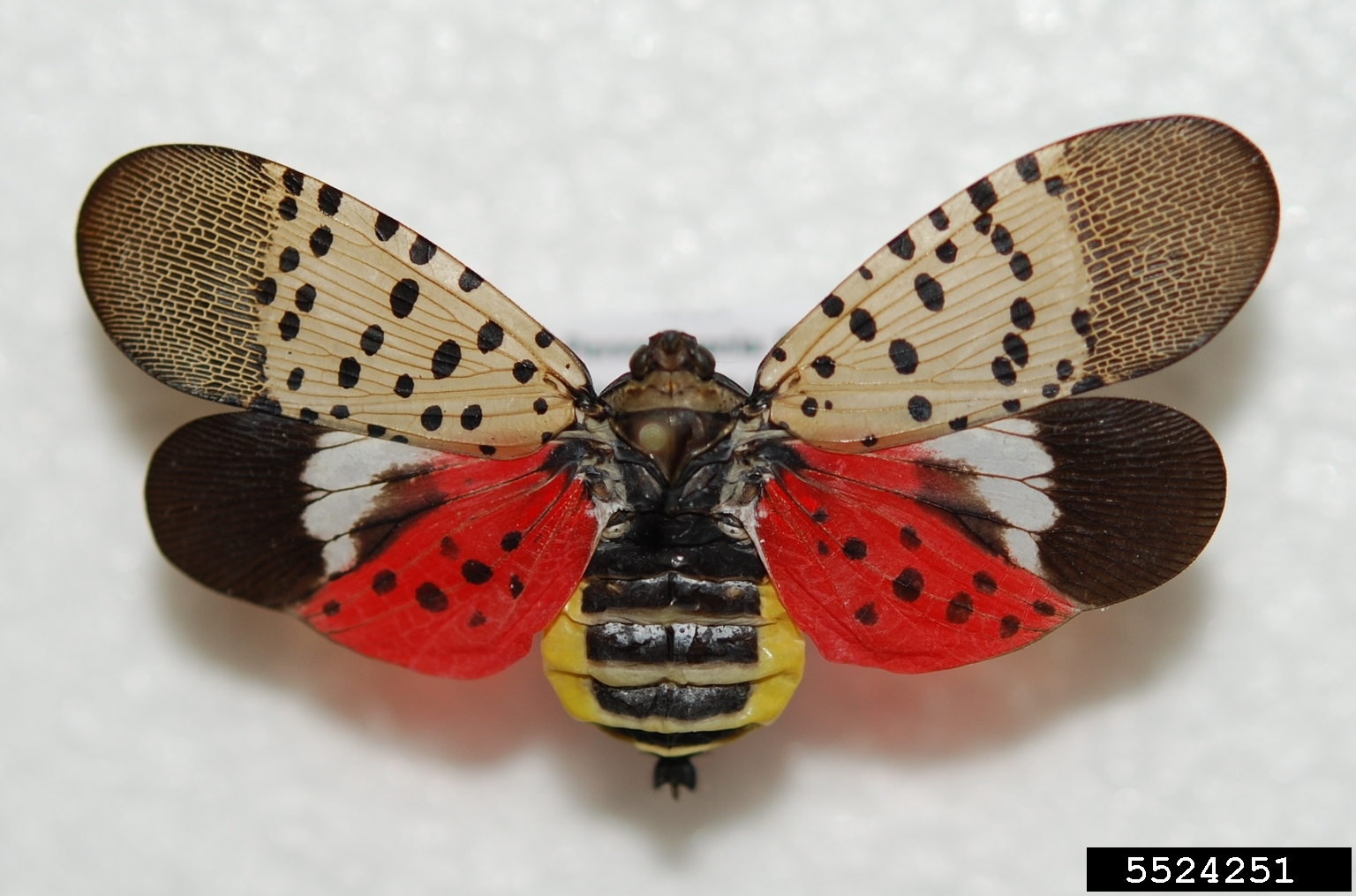
While the insect has been spreading for years in New Jersey, farmers in the state did not report any significant damage in 2021. As reported by William Westhoven of the Star Ledger, Alstede Farm’s Kurt Alstede, in Chester, New Jersey, thinks the problem will be more of a nuisance for homeowners than a devastation for most commercial farmers.
Success
You are now signed up for our newsletter
Success
Check your email to complete sign up
“They’re here, but we’ve been monitoring this for three years. They do not pose a particular threat to any of the crops we are raising,” he said. “We don’t grow grapes. We grow over 120 acres of tree fruit. For what we’re doing, we can control the pests fairly easily. If I was growing grapes, I’d have more of a concern.”
Municipal level control measures
Because of the potential widespread damage these exotic beauties could cause, the NJDA (New Jersey Department of Agriculture) requests that any insects spotted be reported and destroyed, in an initiative dubbed “Stomp It Out.”
New Jersey began surveys and treatments starting in 2018, targeting the insect’s preferred host. After the trees are identified and marked, state crews treat them with herbicide. Since the initiative began, over 200,000 Ailanthus trees have been treated, covering nearly 19,000 acres.
New York City Dept. of Parks and Recreation has also put out a “one-time call,” against its normal policy forbidding people to harm the park’s creatures: “If you see a spotted lanternfly, please squish and dispose of this invasive pest.”
In addition, municipalities are asking individuals to check their vehicles for the pest before traveling, refrain from moving firewood, and report infestations; so we should all become aware of the many life stages of the spotted lanternfly, and how to recognize them.
How to recognize a spotted lanternflies, and where to look
Due to the colorful design and shape of its wings, the adult lanternfly is commonly mistaken for an unusual moth. In fact, each stage of its life cycle presents a distinctly foreign-looking specimen that will be easy to recognize once you know what to look for.
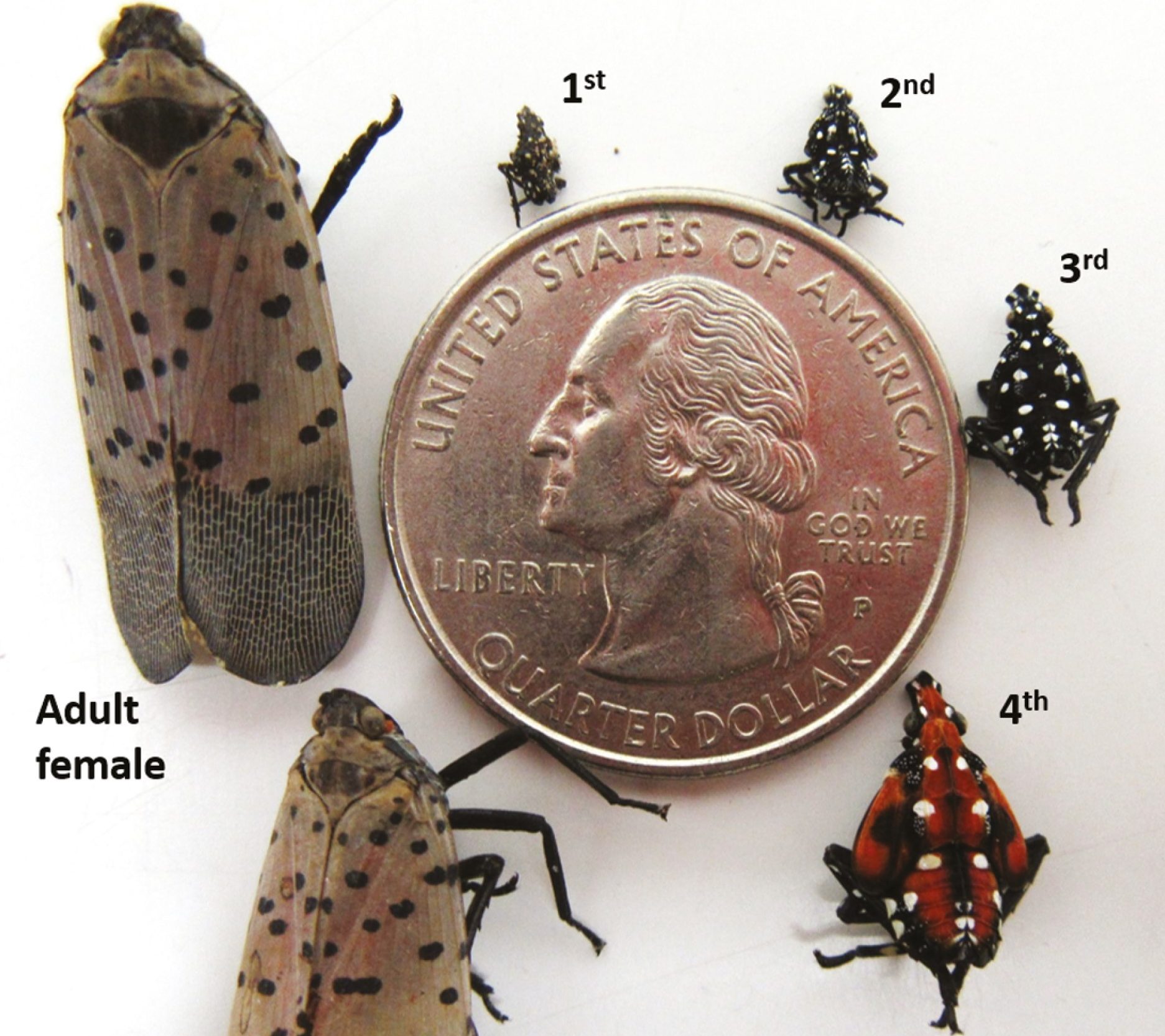
The small, black nymphs that have recently hatched are easy to detect with their bright, white spots. They can be found in clusters or as individuals on plant foliage, stems or tree bark near where they emerged. Although they do not have wings at this stage, they can still hop, and will do so if disturbed.
Soon, these nymphs will morph into larger, more-colorful bodies of black and bright red, maintaining their white spots. Nymphs move around a lot, and are often found climbing the trunks of trees.
Adults exhibit soft, pinkish gray outer wings with black spots. They are fairly well camouflaged, but can be seen en masse climbing and feeding on tree trunks during the summer months. They are more noticeable as individuals in flight, when their bright red inner wings are displayed.

Adults will lay eggs in the fall, and die shortly afterwards. Small clusters of up to 50 eggs coated with a muddy adhesive can be found stuck to a variety of hard surfaces—like tree trunks, patio furniture, vehicles and equipment—where they overwinter to hatch in the spring.
Questionable methods for controlling spotted lanternfly
Many of the methods being applied to destroy spotted lanternflies can also harm other insects, wildlife and the environment. Herbicides can destroy natural habitats, leading to the decline of terrestrial and aquatic populations, while simultaneously contributing to air, water and soil pollution.
Insecticides are never specific enough to only affect the target, and the poisons that allow them to work make their way through the food chain and contaminate the environment.
Sticky bands, wrapped around the bottom of tree trunks to catch spotted lanternflies in the nymph stage, are so sticky that they need a protective cage to prevent small animals from adhering to them. As you can imagine, any beneficial insect that comes their way is surely doomed.
Some recommend vinegar as an environmentally friendly solution for spraying directly on the insects, but vinegar itself is harmful to plants—the most likely place you will find the lanternfly. Acetic acid destroys cell tissues and burns on contact.
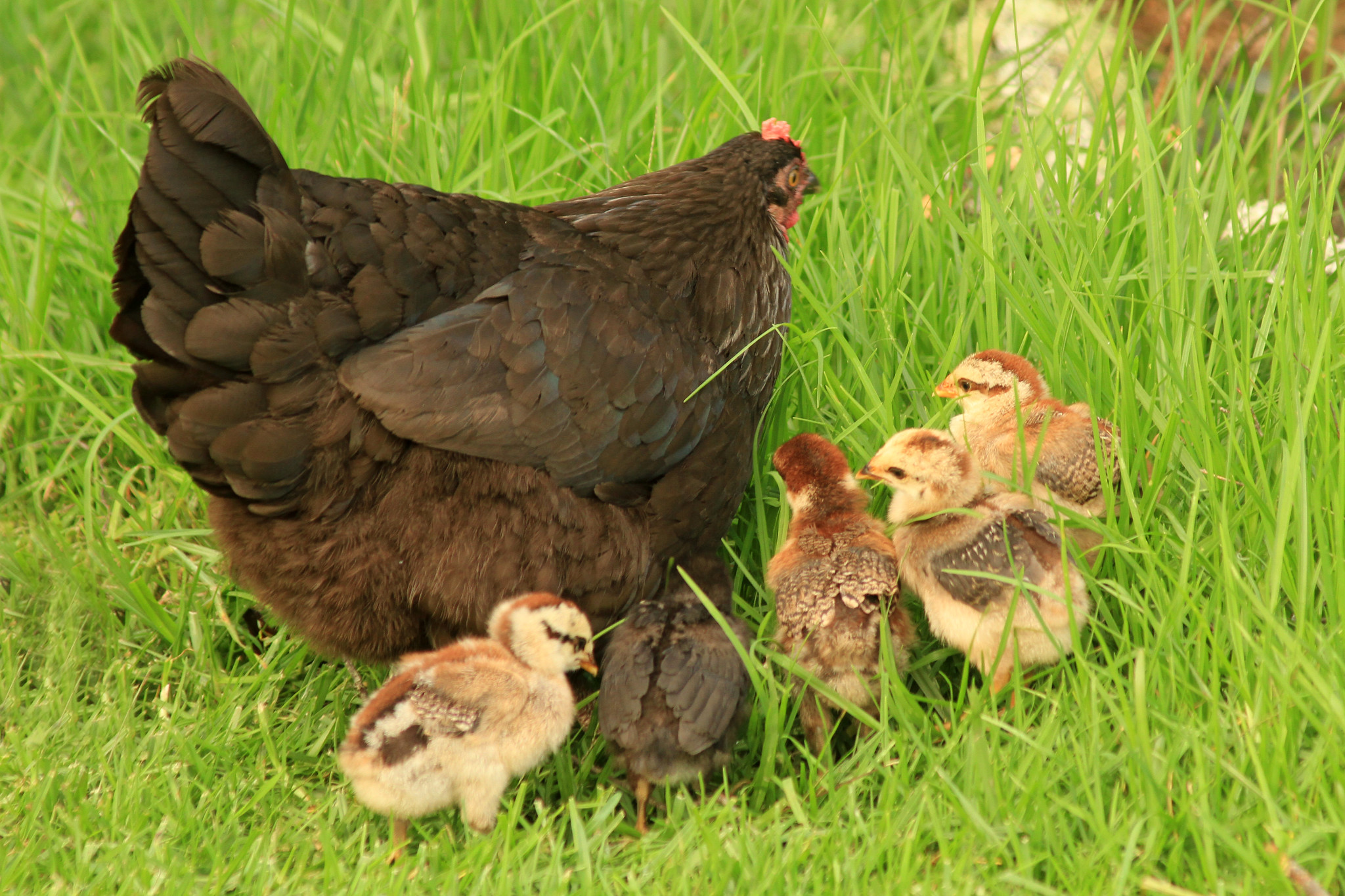
Doesn’t anything eat these bugs?
The natural predator for spotted lanternflies is parasitic wasp found in China, called Dryinus browni. Since we don’t have that species of wasp here, it was initially believed that lanternflies had no natural predators in the States. Yet it turns out they have quite a few.
Some of New Jersey’s most common birds: jays, cardinals and catbirds are known to consume and control this pest. Insect predators include ants, yellowjackets, hornets, and praying mantises; while arachnids contribute via the orbweaver, one of the largest families of spiders.
Even snakes, squirrels, cats, dogs and fish have been seen eating spotted lanternflies; so one might assume the problem should take care of itself. But there is a hitch.
While the lanternfly will feed on a wide variety of plants, including maple, beech, hickory, oak, ash, and various fruit trees, its native and most favorite host is the “tree of heaven” (Ailanthus altissima).
Ailanthus is another invasive species, also native to China, which has thrived and spread in the US since its introduction in the late 1700s in Pennsylvania. According to Penn State’s Department of Entomology, spotted lanternflies may be able to sequester compounds in the plant that are bitter and potentially toxic, making them unpalatable to predators.
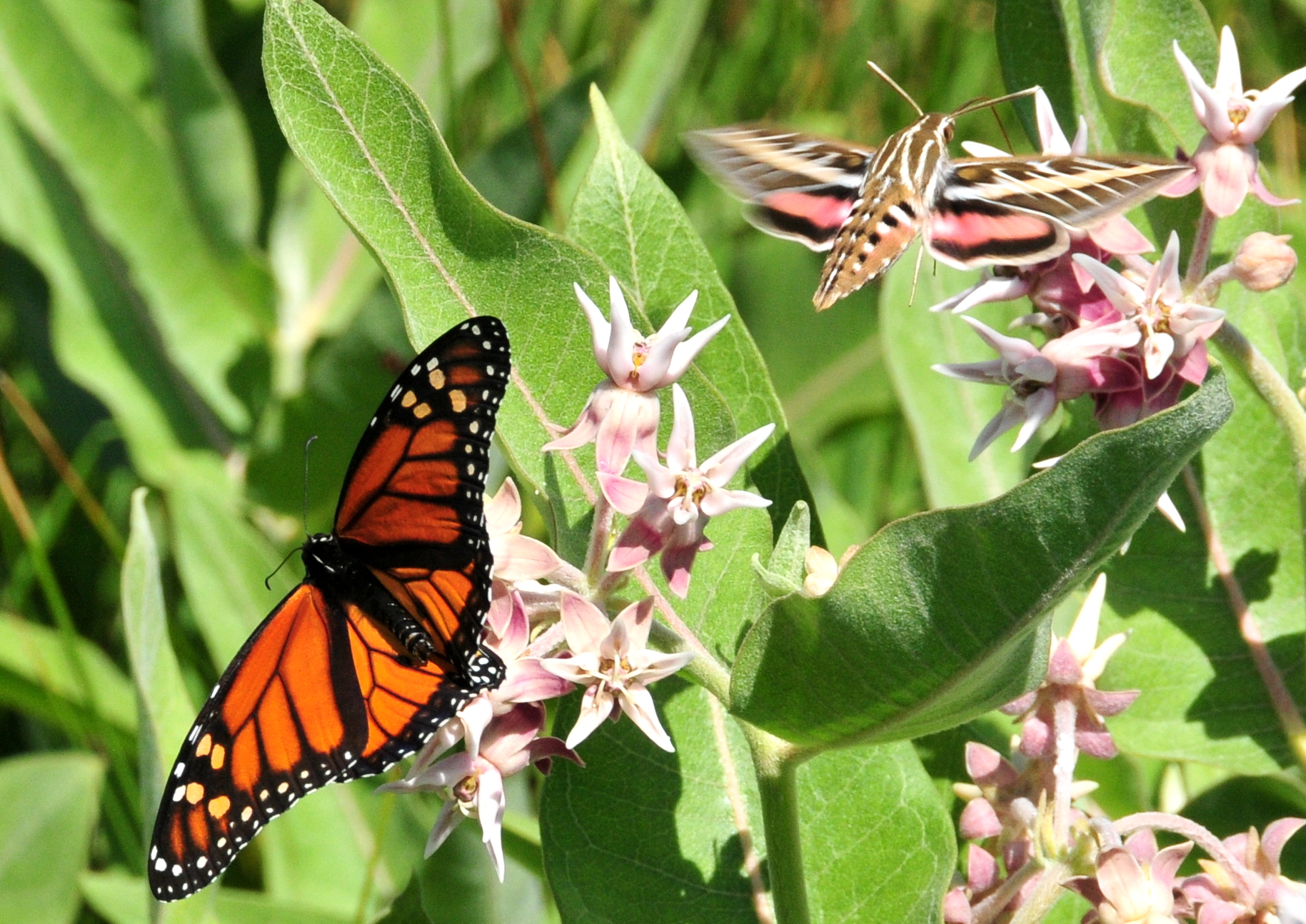
How to handle the pest as individuals
As Alstede suggested in his interview with the Star Ledger, “It’s the homeowners that will find them to be more troublesome. They’re not monitoring things the way we are. They don’t have the tools available to control them.”
There are some environmentally responsible ways to comply with local governments’ requests to kill the bugs, although the idea of squashing them is laughable. There are far too many and they jump too quickly for that method to have any effect. A shop vac is a more appropriate tool for tackling visible insects.
The best time to control the spotted lanternfly is in the winter, by inspecting all outdoor hard surfaces for egg masses. Scrape them off and destroy them to minimize the next season’s infestation.
To repel the pests, a spray of essential oils like peppermint, lavender, or rosemary can be effective for throwing them off the scent of potential hosts. You can easily make your own spray with a few drops of oil in a spray bottle of water.
Remember—healthy plants are better able to resist disease—so keep your plants and trees in good shape. Water during drought; create a “living-soil” environment with plenty of compost and organic matter; and refrain from disturbing the natural ecosystem.
You can also plant a wide range of species to attract natural predators. Brambles and fruiting trees or shrubs will bring in a variety of birds; while beneficial insects will come to pollinate and feed on flowering herbs and wildflowers.
There are non-sticky traps you can purchase or make yourself that pose far less danger to other insects, birds and mammals. The video above video shows how to make such a trap.
Milkweed, a common native plant in the US, exudes a poisonous milky white sap. Since the lanternfly is not familiar with this plant, they treat it much like any other edible, and actually seem to have some preference for it, even though consuming it causes their death.
If we were to restore the declining milkweed population, we may alleviate the lanternfly problem, while, at the same time, provide a valuable food source for many pollinators who feed on the plant’s nectar, which is not poisonous. The endangered monarch butterfly would likely benefit from this scheme.
Most importantly, don’t freak out—negative thoughts are powerful and so are positive thoughts. Use that power to generate a good outcome.
Consider this:
From a long term perspective, if we let this invasive pest infest their native host rather than poisoning it, over time, they may naturally bring that invasive tree under control, or even eliminate it. Without this source of bitter compounds to make them taste bad, any number of predators could keep the lanternfly in check.
Nature always has an answer. Sometimes we just need to be patient and not interfere.



